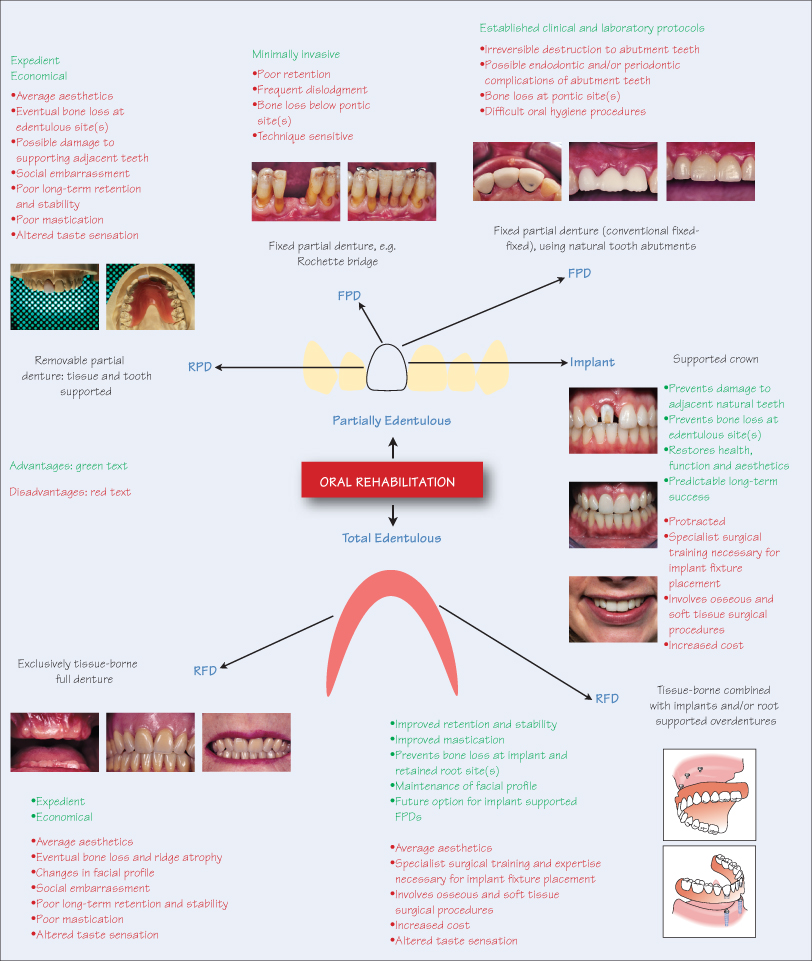2
Overview: Rehabilitation by Artificial Teeth

Oral rehabilitation of missing teeth is achieved with removable or fixed prostheses. The distinction between the two is that removable prostheses are supported by both soft tissues and teeth and/or implants, whereas fixed prostheses are exclusively supported by teeth and/or implants. Before deciding to replace missing teeth, the shortened arch concept should be considered.
Removable Full Dentures (RFD)
Edentulous rehabilitation is either with full/full dentures, totally supported by the alveolar ridges, or with overdentures supported by strategically placed implants and/or retained natural tooth roots for additional stability.
Removable Partial Dentures (RPD)
An RPD relies on support from both soft tissues and adjacent or surrounding natural teeth or implants. These dentures can be fabricated entirely from acrylic resins, or in combination with cast metal frameworks. Clasp, rests and precision attachments are often incorporated into the denture design for additional retention and stability. A variation of RPDs are overdentures, retained by tooth roots or mini implants.
Fixed Partial Dentures (FPD)
Before dental implants, fixed partial dentures were the state-of-the-art prostheses for replacing missing teeth, but involve gross tooth preparation of supporting abutments. More conservative FPDs, with minimal or no preparation, include Maryland, Rochette or fibre-reinforced bridges. While the advantages of minimal preparation are obvious, these types of bridge are less retentive, requiring frequent recementing and are often used as transitional protheses, e.g. during the surgical healing phase following bone grafting or implant placement. Other uses include splinting periodontally c/>
Stay updated, free dental videos. Join our Telegram channel

VIDEdental - Online dental courses


